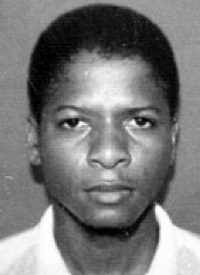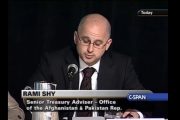
The White House is currently facing criticism after a federal jury convicted former Guantanamo Bay detainee Ahmed Ghailani of just one out of 285 charges. Critics assert that the single conviction is an example of why suspected terrorists should be tried in military court instead of civilian court. Others, however, cite the conviction as evidence that civilian courts effectively deliver justice.
Ghailani was convicted on November 17 of conspiring with al-Qaeda in the 1998 bombings of two U.S. embassies in Africa, a crime punishable by 20 years to life in prison, though the Justice Department assures skeptics that it will seek the maximum punishment.
Conservative pundit Laura Ingraham, one of the critics, contends: “Military tribunals are much more effective in these cases because of the sensitivity of the evidence, and their less stringent admissibility rules.” For example, in Ghailani’s case, explains Ingraham, “One key witness was excluded by the judge because his identity was discovered through enhanced interrogation.”
However, Salon.com contends that military tribunals bar the use of torture-obtained evidence to roughly the same extent, citing Rule 304 (a)(1) and (5) of the Military Commissions Manual. The first reads: “No statement, obtained by the use of torture, or by cruel, inhuman, or degrading treatment … whether or not under color of law, shall be admissible in a trial by military commission.” The second states, “Evidence derived from a statement that would be excluded under section (a)(1) of this rule may not be received in evidence against an accused who made the statement if the accused makes a timely motion to suppress or an objection.”
According to Ingraham, the jury was confronted by mounting evidence that was wholly ignored: Ghailani purchased the flammable gas that made the bombs more deadly; stored the electric detonators; provided the cellular phone to the suicide bombers; and was a close associate with al-Qaeda and other convicted bombers; and spent some time in al-Qaeda safe houses. Yet despite the evidence against him, says Ingraham, he was convicted of solely “conspiring to blow up a government building.”
The backlash against the Obama administration following the conviction was fierce. Utah’s Republican Sen. Orrin Hatch said, “It’s time for the administration to listen to the 9/11 families and the American people and change course by putting all terror trials through our military commission system.” And Rep. Trent Frank of Arizona contends that Attorney General Eric Holder should “repudiate” the White House’s terror trial policy or resign immediately.
Frank continued:
If this insane policy of appeasing terrorists and granting them American constitutional rights to be tried as quasi American citizens continues, the cost of this failure will pale in comparison to the cost of the failure that will undoubtedly yet occur as a result of this ruling. Terrorists now have incontrovertible evidence that they can exploit the American justice system and they will use this knowledge to train new terrorist recruits and manipulate their cases if and when they are caught.
On the other hand, the New Yorker’s Amy Davidson argues that the outcry against the single conviction implies that Americans perceive the legal system to be “a machine for producing the maximum number of convictions, regardless of the law.” The fact of the matter is that our legal system is based on the concept that the accused is innocent until proven guilty, and in order for a jury to reach a guilty verdict every member of the jury must find the defendant guilty beyond any reasonable doubt. Both the presumption of innocence until proven guilty and the jury system are designed to protect the rights of all of us, because any one of us could be wrongly accused of commiting a crime. But it does not shield from justice —nor is it intended to — those for whom the evidence of having committed a crime is beyond a reasonable doubt. Consider Timothy McVeigh, the Oklahoma City bomber who was found guilty in a civilian court and given the death penalty.
Salon.com explains that it was the intent of America’s Founding Fathers to make it difficult to imprison individuals, and that they did so “with the full knowledge that clearly guilty and even extremely evil people would sometimes receive something other than the punishment they deserve.”
In response to the backlash, the Justice Department cites the likelihood that Ghailani will spend the rest of his life behind bars as an example of success.
Matt Miller, a spokesman for the Justice Department, indicates, “I think the people who are criticizing the outcome of Ghailani are not paying sufficient attention to the fact that he was convicted, and he was convicted of a serious crime that will lead to a long sentence. That is our goal in these cases. Our goal is to incapacitate terrorists, to keep them behind bars, to obtain justice.”
Nevertheless, Sue Bartley, wife and mother of two of the bomb victims, claims she was “stunned” by the verdict.
According to Salon.com, however, “The verdict in this case — no matter what it was — would be largely inconsequential in terms of Ghailani’s imprisonment. He has already been imprisoned without charges for six years, including two years at a CIA ‘black site,’ and yesterday’s verdict means he will spend decades more in prison.”
The website adds, “Even had he been acquitted on all counts, the Obama administration had made clear that it would simply continue to imprison him anyway under what it claims is the President’s ‘post-acquittal detention power.’”
Meanwhile, five suspected 9/11 terrorists, including Khalid Sheikh Mohammed, were considered for trials in civilian court, but, because of opposition from Congress and New Yorkers, are now put on hold while the administration ponders its next move.
Miller contends, “We make those decisions based on facts, based on the law. And we’ll continue to work through that with the detainees who are still at Guantanamo.”
Photo: Ahmed Ghailani




